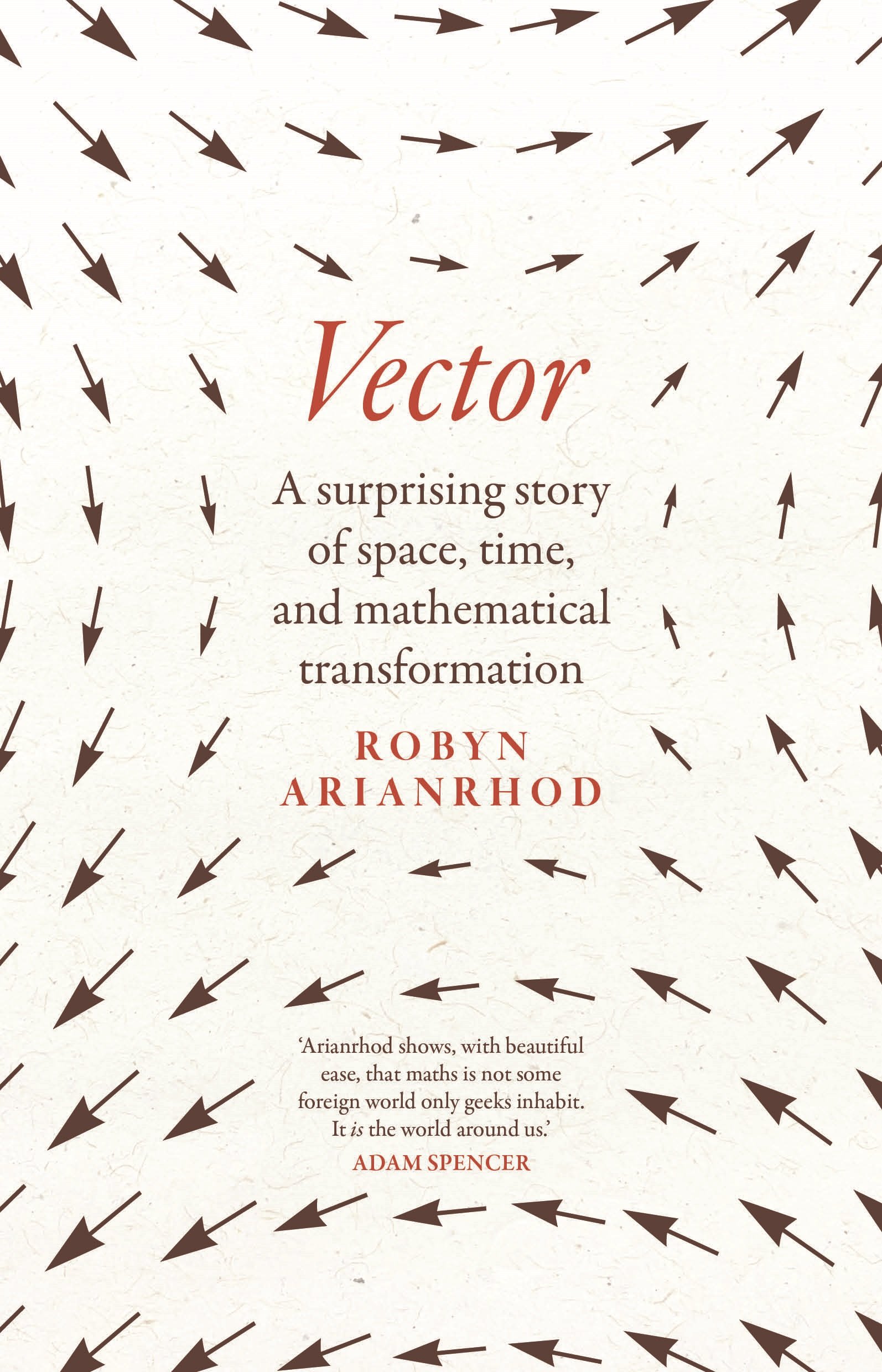Vector: A surprising story of space, time, and mathematical transformation
University of New South Wales Press, $44.99 pb, 472 pp
i² = j² = k² = ijk = –1
If you ever came across a vector in a high-school science class, it probably looked quite simple: a little arrow you might draw on a diagram to show the motion of a train or the forces on a swinging pendulum. An arrow pointing right would cancel an arrow pointing left, or → + ← = 0. Add together two arrows pointing in the same direction, you get one twice as long: →. A rightward arrow plus an upward one? You’ve got yourself a diagonal: → + ↑ = ↗.
As it turns out, this arrow arithmetic is a handy way to think about numbers and spatial relationships, especially if you combine it with other kinds of mathematical gear like algebra and calculus. Although the vector picture was originally devised to describe the familiar three-dimensional space we live in, it can be expanded in surprising directions. Vectors turn up in the curved spacetime of Albert Einstein’s relativity and the weird twelve-dimensional universes of string theory, as well as in Google’s page-ranking algorithm and the abstract spaces with thousands of dimensions that modern AI models use to represent things like language and meaning. However, as mathematician and historian Robyn Arianrhod shows in her new book, Vector, the invention of this deceptively simple piece of conceptual technology took several thousand years.
Continue reading for only $10 per month. Subscribe and gain full access to Australian Book Review. Already a subscriber? Sign in. If you need assistance, feel free to contact us.












Leave a comment
If you are an ABR subscriber, you will need to sign in to post a comment.
If you have forgotten your sign in details, or if you receive an error message when trying to submit your comment, please email your comment (and the name of the article to which it relates) to ABR Comments. We will review your comment and, subject to approval, we will post it under your name.
Please note that all comments must be approved by ABR and comply with our Terms & Conditions.